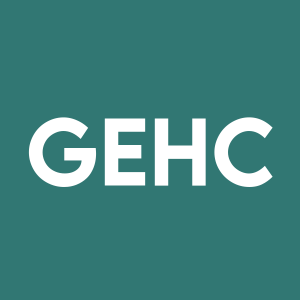GE HealthCare Announces Study Results Demonstrating Portrait Mobile Continuous Monitoring Solution Performance with Patients and Care Teams in the Ward
- Continuous patient monitoring with Portrait Mobile resulted in alarm data suitable for optimization of ward default values and refinement on an individual basis, potentially improving usability.
- Continuous monitoring of vital signs with Portrait Mobile can help detect patient deterioration and enable timely intervention before a patient deteriorates.
- None.
Insights
Analyzing...
- Study finds that continuous monitoring of vital signs (respiratory rate, oxygen saturation and pulse rate) with Portrait Mobile results in alarm data which may be used to optimize system configuration and mitigate alarm fatigue in the ward environment.
- Study results revealed at the American Society of Anesthesiologists (ASA) Annual Meeting.
The COSMOS (Continuous Ward Monitoring with the GE HealthCare Portrait Mobile Monitoring Solution) Phase 1 study enrolled 100 post-surgical patients who had respiratory rate, oxygen saturation, and pulse rate monitored continuously with Portrait Mobile.* The results demonstrate that continuous monitoring of these vital signs with Portrait Mobile produces data to drive alarm threshold configuration within the ward, optimize actionable alarms, minimize non-actionable alarms, and minimize alarm fatigue. Alarm optimization is essential to reach a balance of detecting patient deterioration without burdening caregivers with non-actionable false alarms.
Undetected patient deterioration, particularly post-surgery, can lead to hazardous yet preventable consequences, with 30-day mortality after surgery representing the third leading cause of death globally.1 The uninterrupted flow of data and continuous measurement of vital signs can help alert healthcare providers to a patient’s decline as it is happening, enabling timely intervention before a patient deteriorates.
“Most patients recovering from surgery have vital signs evaluated every 4-6 hours. We know that intermittent monitoring misses many vital sign abnormalities,” shares Principal Investigator Daniel Sessler, MD, Michael Cudahy Professor and Chair of Outcomes Research at Cleveland Clinic. “Our analysis identified alert thresholds that identify potentially serious abnormalities without generating undue burden for nurses.”
The challenges of managing alarms in a care setting can be a major factor in fatigue and burnout with alarm rates in intensive care and cardiac telemetry published reports numbering in the hundreds per bed per day.2,3 Clinician experience in these high alarm burden environments may lead to concerns of similar alarm counts with continuous monitoring in the medical-surgery environment. The COSMOS study used alarm burden analytic software to evaluate the interaction of physiologic data, duration of alarm delays and alarm thresholds to determine the potential number of alarms on Portrait Mobile per patient per day at various configurations. The initial average of alarms per patient per day was 7 but, after adjusting thresholds for those patients with >24 alarms per day, the average dropped to 3 per day, or roughly 1 alarm every 8 hours, per patient.**
GE HealthCare’s recent Reimagining Better Health study also highlighted the challenges of clinician workforce shortages and burnout, with fewer than half of clinicians reporting they have enough time to care for both patients and their families.
“In an era where clinician workforce shortages are causing burnout, we are focused on easing the way for care teams to deliver more confident patient care,” said John Beard, MD, Chief Medical Officer of Patient Care Solutions, GE HealthCare. “To reduce preventable patient harm from delayed recognition of clinical deterioration, and help alleviate alarm burden on care teams, continuous monitoring requires a technically robust system and properly configured physiologic thresholds to develop caregiver trust and support timely intervention. The COSMOS Phase 1 data presented at ASA represents an essential step in Portrait Mobile system configuration to meet the potential of continuous physiologic monitoring in the ward environment.”
*The COSMOS study was funded by GE HealthCare.
**The COSMOS Phase 1 study found that
About Portrait Mobile
Portrait Mobile is part of GE HealthCare’s FlexAcuity monitoring solution that combines hardware and software engineered to adapt to rapidly changing patient needs and builds on a well-established history of clinical advancements. It was this deep understanding of patient needs combined with a commitment to providing caregivers with actionable insights that led GE HealthCare’s global engineers to develop this next evolution in patient monitoring technology. GE HealthCare’s technology has been recognized globally for its design, receiving the iF Design Gold Award for Product Design in 2022 for Portrait Mobile and an iF Design Award in 2023 for CARESCAPE Canvas. For more information on Portrait Mobile, please visit: https://www.gehealthcare.com/products/patient-monitoring/portrait-mobile/
About GE HealthCare Technologies Inc.
GE HealthCare is a leading global medical technology, pharmaceutical diagnostics, and digital solutions innovator, dedicated to providing integrated solutions, services, and data analytics to make hospitals more efficient, clinicians more effective, therapies more precise, and patients healthier and happier. Serving patients and providers for more than 100 years, GE HealthCare is advancing personalized, connected, and compassionate care, while simplifying the patient’s journey across the care pathway. Together our Imaging, Ultrasound, Patient Care Solutions, and Pharmaceutical Diagnostics businesses help improve patient care from diagnosis, to therapy, to monitoring. We are an
Follow us on Facebook, LinkedIn, Twitter, Instagram, and Insights for the latest news, or visit our website https://www.gehealthcare.com/ for more information.
1 Nepogodiev D, et al. National Institute for Health Research Global Health Research Unit on Global Surgery. Global burden of postoperative death. Lancet. 2019;393(10170):401.
2 Gross B, Dahl D, Nielsen L. Biomed Instrum Technol. Physiologic monitoring alarm load on medical/surgical floors of a community hospital. Spring. 2011;Suppl:29-36. doi: 10.2345/0899-8205-45.s1.29. PMID: 21599479.
3 Physician-Patient Alliance for Health & Safety. ‘Alarm fatigue’ a top-of-mind concern for
View source version on businesswire.com: https://www.businesswire.com/news/home/20231015525162/en/
GE HealthCare Media Contact:
Jennifer Purdue
M +1 267 593 9735
jennifer.purdue@ge.com
Source: GE HealthCare







